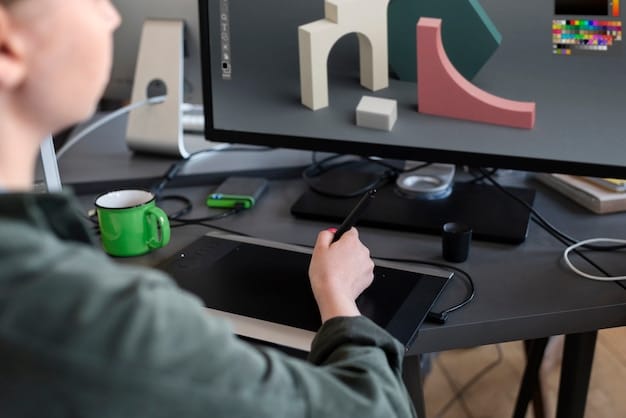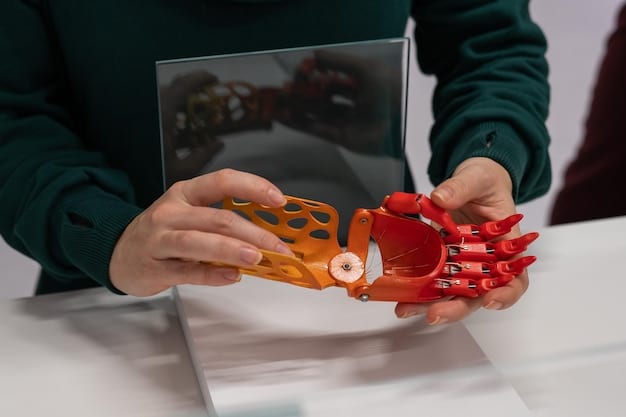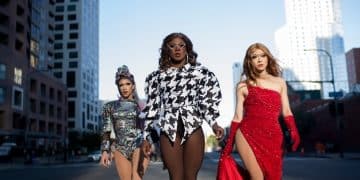Inclusive Design: A Designer Spotlight on Accessibility for People with Disabilities

Designer Spotlight: The American Designer Creating Inclusive Designs for People with Disabilities, focuses on highlighting how innovative designers are breaking barriers by integrating accessibility into everyday products and spaces.
In the field of design, true innovation goes beyond aesthetics to embrace inclusivity. This Designer Spotlight: The American Designer Creating Inclusive Designs for People with Disabilities, celebrates the work of an inspiring figure, who is setting new standards by prioritizing accessibility and creating solutions that cater to diverse needs.
The Importance of Inclusive Design
Inclusive design is more than just a trend; it’s a fundamental approach that ensures products, services, and environments are usable by as many people as possible, regardless of their abilities or disabilities. This approach not only enhances the quality of life for individuals with disabilities but also creates solutions that are often beneficial for everyone.
By focusing on inclusivity, designers can unlock new levels of innovation and creativity, leading to solutions that are not only functional but also aesthetically pleasing and user-friendly. The impact of inclusive design extends beyond individual users, fostering a more equitable and accessible society for all.
What is Universal Design?
Universal design is a key concept within inclusive design, aiming to create products and environments that can be used by all people, to the greatest extent possible, without the need for adaptation or specialized design. This approach considers a wide range of human abilities and characteristics, including physical, sensory, and cognitive variations.
- Equitable Use: The design is useful and marketable to people with diverse abilities.
- Flexibility in Use: The design accommodates a wide range of individual preferences and abilities.
- Simple and Intuitive Use: Use of the design is easy to understand, regardless of the user’s experience, knowledge, language skills, or current concentration level.
- Perceptible Information: The design communicates necessary information effectively to the user, regardless of ambient conditions or the user’s sensory abilities.
Inclusive design encourages designers to think beyond the norm and consider the needs of all potential users from the outset, ensuring that accessibility is a core consideration rather than an afterthought. This approach can lead to innovative solutions that are both elegant and effective, improving the user experience for everyone.
Meet the Designer: A Champion for Accessibility
At the heart of this spotlight is an American designer whose passion for accessibility has driven them to create groundbreaking solutions that address the needs of people with disabilities. This designer’s work is characterized by a deep understanding of user needs, combined with a creative approach to problem-solving.
Their journey into inclusive design was inspired by personal experiences and a desire to make a tangible difference in the lives of others. Through empathy, research, and collaboration, this designer has developed a unique perspective on how design can be used to promote inclusion and empowerment.
Early Influences and Motivations
Understanding the designer’s early influences and motivations can provide insight into their dedication to accessibility. Perhaps a personal connection with disability, or an early exposure to the challenges faced by those with limited mobility or sensory impairments, sparked their interest in inclusive design.
- Personal Experiences: Direct interactions with individuals facing accessibility challenges.
- Educational Opportunities: Exposure to inclusive design principles in academic settings.
- Mentorship: Guidance from experienced designers and advocates in the field.
Through these experiences, the designer developed a deep understanding of the physical, cognitive, and emotional barriers that people with disabilities encounter every day. This understanding has become the driving force behind their work, motivating them to create solutions that are both practical and empowering.
By prioritizing the needs of individuals with disabilities, this designer challenges conventional design norms and promotes a more inclusive and compassionate approach to product and service development. Their work serves as an inspiration to other designers, encouraging them to embrace accessibility as a core design principle.

Innovative Projects and Solutions
The designer’s portfolio showcases a range of innovative projects and solutions that address diverse accessibility needs. These projects demonstrate their ability to combine creativity, technology, and user-centered design principles to create impactful solutions. From assistive devices to accessible environments, their work has transformed the lives of countless individuals.
Each project is a testament to their commitment to inclusivity, reflecting a deep understanding of the challenges faced by people with disabilities and a passion for creating solutions that empower and enhance their independence.
Assistive Technology and Devices
One area of focus has been the development of assistive technology and devices that enhance the capabilities of individuals with disabilities. These solutions are designed to be user-friendly, aesthetically appealing, and seamlessly integrated into everyday life.
- Customizable Prosthetics: Prosthetic limbs designed to be highly customizable and adaptable to individual needs.
- Smart Home Integration: Technology that allows individuals with mobility impairments to control their home environment through voice commands or assistive devices.
- Accessible Gaming Controllers: Gaming controllers that are designed to be used by individuals with limited hand or finger dexterity.
By focusing on the user experience, this designer ensures that assistive devices are not only functional but also comfortable and empowering. Their work challenges the stigma associated with disability, promoting a more inclusive and accepting view of assistive technology.
The impact of these innovative projects extends beyond individual users, inspiring other designers and engineers to prioritize accessibility in their work. By showcasing the potential of inclusive design, this designer is helping to create a future where assistive technology is seamlessly integrated into society, enhancing the lives of people with disabilities.
The Impact of Inclusive Design on Society
Inclusive design has a profound impact on society, fostering a more equitable and accessible world for everyone. By considering the needs of all potential users, designers can create solutions that are not only beneficial for individuals with disabilities but also enhance the quality of life for the entire community.
The benefits of inclusive design extend beyond individual users, promoting social inclusion, economic empowerment, and a more compassionate and understanding society. When accessibility is prioritized, everyone benefits.
Creating More Accessible Environments
One of the most significant contributions of inclusive design is the creation of more accessible environments. From public spaces to private residences, accessible design ensures that everyone can participate fully in community life, regardless of their abilities or disabilities.
- Ramps and Elevators: Providing access to buildings and spaces for individuals with mobility impairments.
- Tactile Signage: Using tactile cues to provide information for individuals with visual impairments.
- Quiet Zones: Creating calm and quiet spaces for individuals with sensory sensitivities.
By advocating for accessibility standards and guidelines, designers can help to ensure that new buildings and public spaces are designed with inclusion in mind. This approach promotes a more equitable and welcoming environment for all members of the community.
The impact of accessible environments extends beyond physical access, fostering a sense of belonging and social inclusion. When everyone can participate fully in community life, society as a whole benefits from increased diversity, creativity, and innovation.

Challenges and Future Directions
While the field of inclusive design has made significant progress, there are still challenges to overcome and future directions to explore. Overcoming these challenges requires a collaborative effort from designers, policymakers, and the community as a whole.
The future of inclusive design holds great promise, with opportunities to leverage technology, expand collaboration, and promote a more inclusive and equitable society for all. By embracing these opportunities, designers can create solutions that are not only functional but also transformational.
Promoting Awareness and Education
One of the key challenges is promoting awareness and education about inclusive design. Many designers and policymakers are still unaware of the benefits of accessibility and the importance of considering the needs of all potential users.
- Educational Workshops: Conducting workshops and training sessions for designers and policymakers.
- Public Awareness Campaigns: Launching campaigns to raise awareness about inclusive design and its impact.
- Curriculum Integration: Integrating inclusive design principles into design and architecture curricula.
By promoting awareness and education, we can help to ensure that accessibility is a core consideration in all design and policy decisions. This approach will lead to more inclusive and equitable solutions that benefit everyone.
The future of inclusive design depends on our ability to foster a culture of empathy, collaboration, and innovation. By embracing these values, we can create a more accessible and equitable world for all members of society.
Resources for Aspiring Inclusive Designers
For those inspired by the work of this designer and eager to contribute to the field of inclusive design, there are numerous resources available to help them develop their skills and knowledge. These resources include educational programs, professional organizations, and online communities.
By investing in education, networking, and mentorship, aspiring inclusive designers can equip themselves with the tools and knowledge they need to make a meaningful impact on society. The future of inclusive design depends on their creativity, passion, and commitment.
Educational Programs and Courses
Numerous educational programs and courses offer specialized training in inclusive design. These programs provide students with a comprehensive understanding of accessibility principles, user-centered design methodologies, and assistive technology.
- University Programs: Degrees in design, architecture, and engineering with a focus on inclusive design.
- Online Courses: Flexible online courses to learn the foundations of inclusive design.
- Workshops and Seminars: Practical workshops by industry pros.
By pursuing formal education or specialized training, aspiring inclusive designers can gain the knowledge and skills they need to excel in the field. These programs are a valuable investment in their future and the future of inclusive design.
The journey to becoming an inclusive designer is a rewarding one, filled with opportunities to learn, grow, and make a positive impact on society. By embracing the principles of empathy, collaboration, and innovation, aspiring designers can play a vital role in creating a more accessible and equitable world for everyone.
| Key Takeaway | Brief Description |
|---|---|
| 💡 Inclusive Design | Creating products and environments accessible to all, regardless of ability. |
| 🤝 Universal Design | Designing for maximum usability without adaptation, for everyone. |
| 🚀 Assistive Tech | Tech solutions for enhanced capabilities for people with disabilities. |
| 🌍 Social Impact | Inclusive design promotes an equitable, accessible, and compassionate society. |
Frequently Asked Questions
▼
Inclusive design is an approach focused on creating products and environments that are usable and accessible by as many people as possible, regardless of their abilities or disabilities.
▼
Universal design is a subset of inclusive design. It strives to make items usable by the broadest range of people without the need for adaptation. It anticipates varied abilities.
▼
Key principles include Equitable Use, Flexibility in Use, Simple and Intuitive Use, Perceptible Information, Tolerance for Error, Low Physical Effort, and Size and Space for Approach and Use.
▼
Inclusive design fosters equity, accessibility, innovation, and social inclusion. It also broadens markets, enhances user experience, and promotes a compassionate society for all.
▼
You can explore resources like university courses, online programs, professional organizations, and mentorship opportunities. Also, immersing yourself in diverse communities aids learning.
Conclusion
Highlighting Designer Spotlight: The American Designer Creating Inclusive Designs for People with Disabilities underscores the industry’s transformation to make designs more user friendly. From implementing universal design principles to using innovative technologies, designers are creating accessible solutions. The ongoing need for attention on inclusive design practices has paved the way for a generation of creative and empathetic designers to meet a range of needs, and create a more inclusive world for all.





